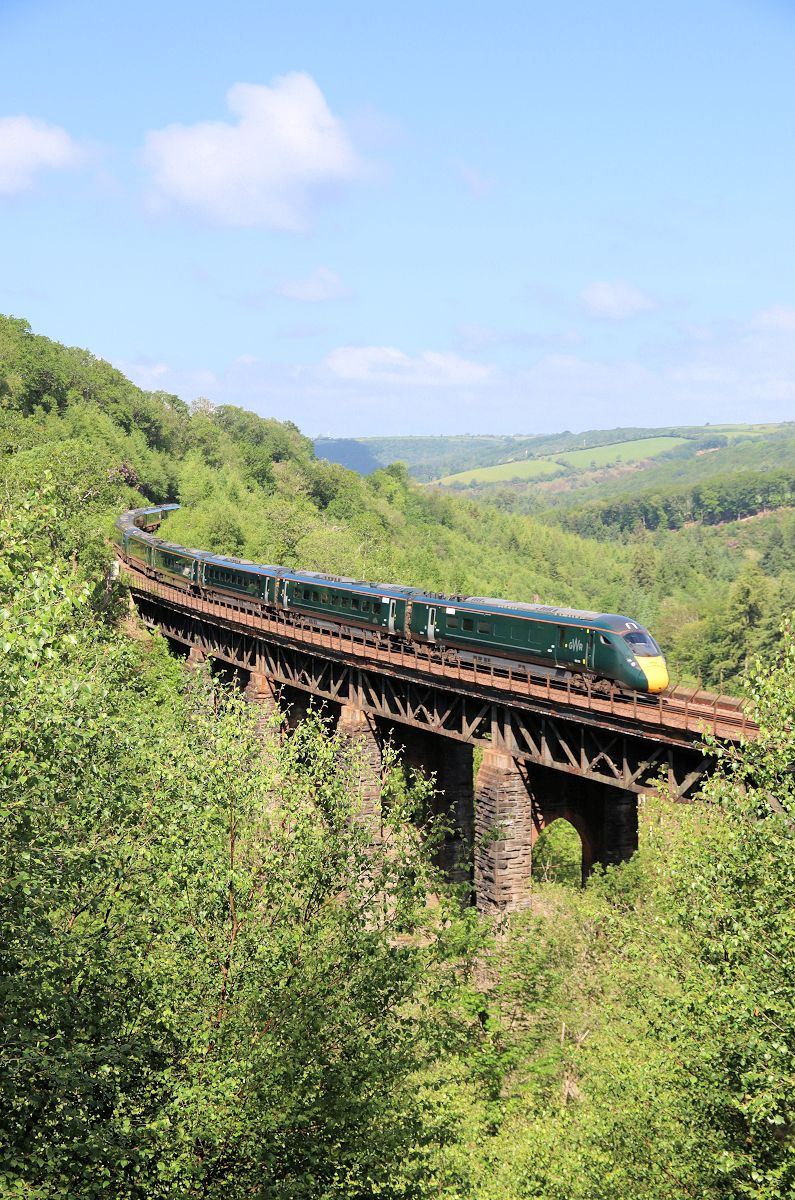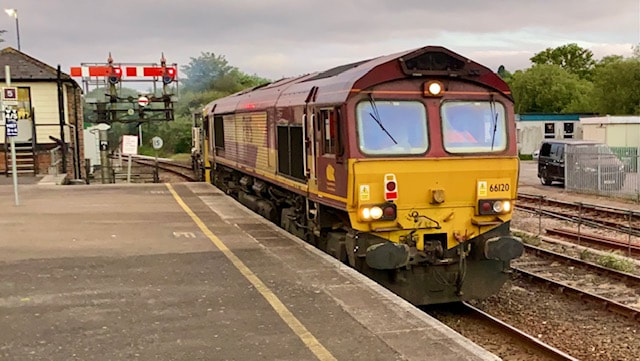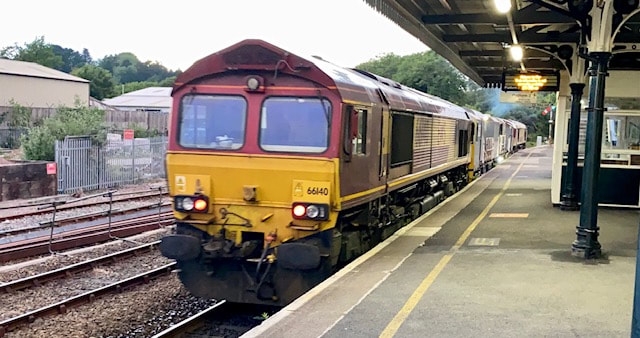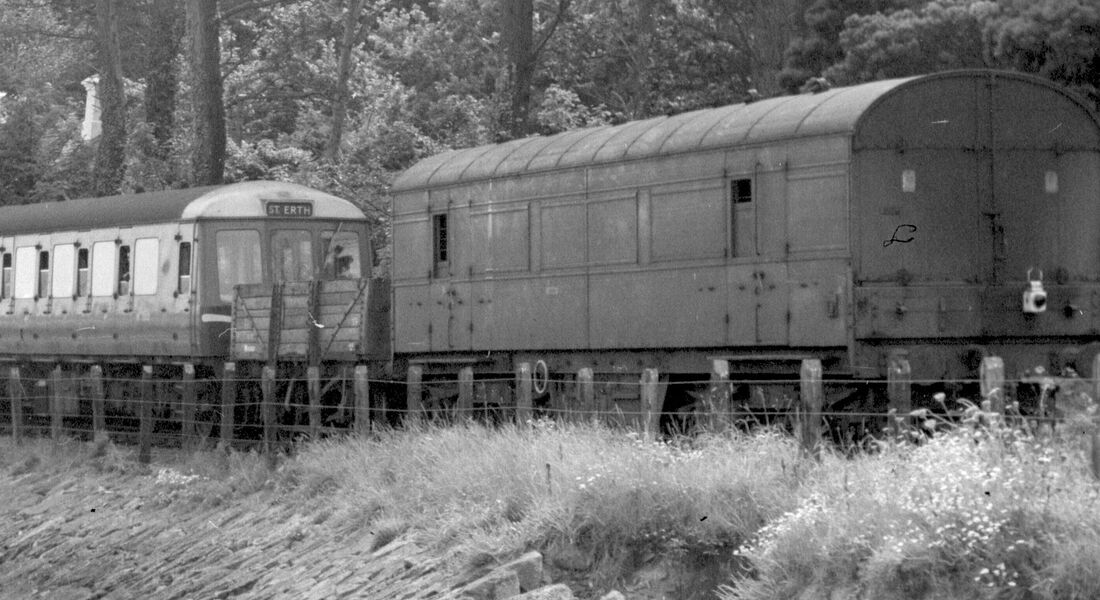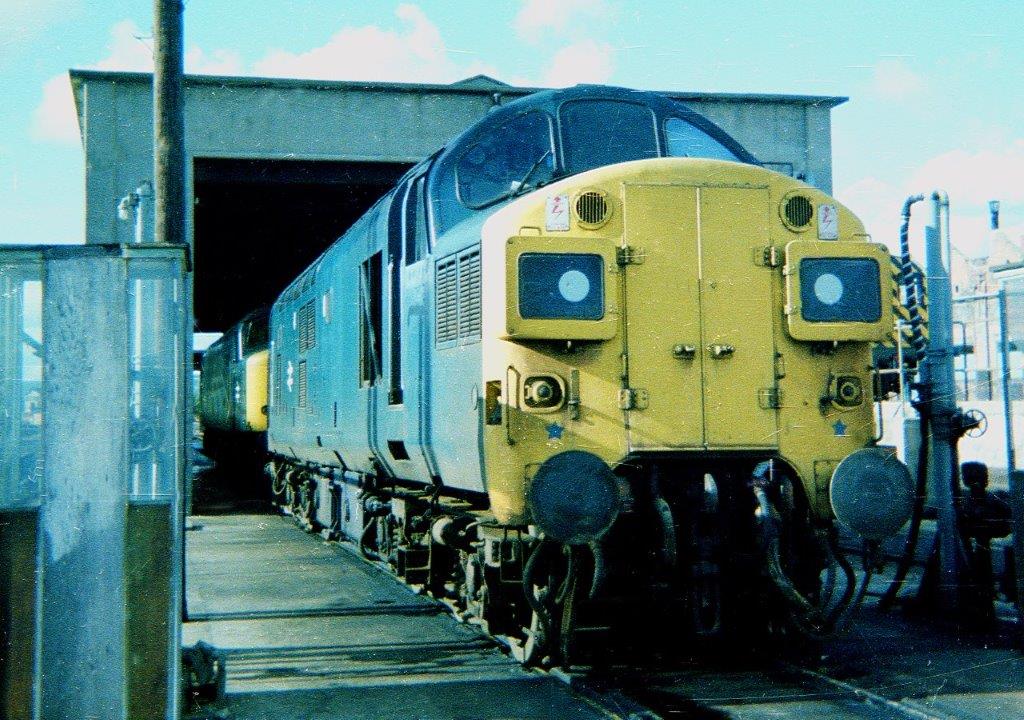Largin
Chris Harvey
The trees around the viaduct are growing quickly, and soon this view may not be possible!
Best Regards, Chris Harvey.
Andrew Keast
Bill Elston
the weekend possession at Twyford/Ruscombe. The loco, 66560, seen passing Creech.
Best wishes, Bill.
Laurence Hansford
Regarding the station head-shunt being concreted over for handling fish traffic I can confirm it was still present well into the 50s. I can’t remember exactly when it was torn up but I think it was done in 1954 when the viaduct was rebuilt. At the time the opportunity was taken to replace most of the signalling (for example all the point rodding was changed from the old rusty round iron bar to the modern galvanised iron inverted trough section running on hidden rollers) as well as some of the track in the station area. I also remember that lying between the two tracks was a long piece of rather perished rubber hose still connected to a large tap protruding from the ballast. This was very similar to what could be seen at other stations used for replenishing train toilet cisterns. I also recall the area still smelling fishy although this probably came from empty fish boxes which tended to be piled in the area between the buffer stops and the weigh-bridge hut.
Now, as for the use of large prairies, the period between the official cessation of steam on the branch and the real end of steam was rather interesting. To start with, the type 2 diesels (D63XX class) were used just as a straight replacement for a steam engine so most trains consisted of a “B” set with the diesel running round at each end, the only difference being that they never went up to the engine shed for water. Even the evening double length train back to St Erth ran with a double-headed pair. Then after some months DMUs started to be used instead , initially consisting of a “bubblecar” and a trailer. This caused unexpected problems. Up until this point most freight movements (mostly coal, mangle wurzels, sugar beet or motor-bike paniers) were handled by tagging 2 or 3 trucks behind the branch passenger train. Not sure whose idea it was but St Ives railwaymen saw the bubblecar and trailer as a push-pull engine and coach, reasoning that as the trailer weighed 30 odd tons, the bubblecar on its own would be able to deal with 2-3 trucks. Accordingly, for a while, when required they would drive down the sea siding, uncouple and disconnect the trailer and dump it there, pick up the trucks and take them on the next timetabled train to St Erth. The trailer would be picked up later.
Not surprisingly, this practice was sooner or later to run into trouble. With ordinary branch passenger coaches it only really mattered that the brake vacuum pipes were coupled up properly; if there was a problem with the steam heating pipes or the lighting connectors it wasn’t exactly the end of the world. These new-fangled diesels were a bit different: pretty much all the connections had to be reliably made for the whole train to be fully controllable and on more than one occasions they ended-up with a train which they couldn’t get to function properly, meaning that another DMU had to be called out complete with a fitter to sort the problem.
It was quickly realised that splitting/coupling of DMUs was best carried out by those who knew what they were doing and only when necessary.
A bubblecar and trailer had only just sufficient power (300 HP, I think) to manage the 1 in 60 gradients on the St Ives line so from then on goods vehicles were gathered together until there were enough to warrant an afternoon goods train in the care of a D63XX loco. However, that is not to say that never again were goods waggons towed behind DMUs; they were, during the summer months when one or frequently a pair of 3-car units were running which had spare power available. Typical loads were coal trucks and PLA vans carrying stuff like Boy Scout’s gear.
It is a generally accepted wisdom that these early diesels were unreliable and indeed they did have their problems although, having witnessed their introduction, it is my impression that the DMUs were far more troublesome than the type 22s with unexpected failures like broken drive shafts digging into the ballast. However, I think some of the problems can be attributed to the way they were initially handled by men more accustomed to the near indestructability of the steam engine. I also believe that once they had learnt how not to mis-treat their new steads, reliability improved.
So, unexpected substitutions there were; they could be another DMU or a loco plus coaches in place of a DMU, a D63XX in place of another and a steam engine could pop up anytime. And, has been noted, because the dieselisation of West Cornwall was nearly total, the steam engine would be what was available, a pannier tank, a 45XX or a 55XX. I found it very frustrating because I was doing my A-Levels at the time so missed the goings-on during weekdays although I might be lucky enough to see something after I jumped off the school bus at about 4:45.
I wished I had had a camera to record some of what I saw but money was tight; however I did start to take notes from early May 1962 so, for the record I can say that from then on steam featured as follows:-
Monday 11th June 1962 A pair of 3-car DMUs ran until lunchtime then 5508 took over with 5 carriages
Saturday 16th June 1962 5545 & 4570 were used on an 8 coach Sunday School special (this was the last Saturday before start of Summer Timetable)
Saturday 23rd June 1962 There was a lot of activity in addition to the morning UP and evening DOWN through Cornish Riviera. At 11:15 D6318 & D6324 arrived with 8 assorted corridor coaches from different regions. Then 22 minutes later 5545 & 4570 arrived with a rake of 8 WR corridor coaches. These later departed as 3 separate trains. In between, a 3-car DMU ran normal branch services. At 18:00 4570 & 5508 arrived with the 8 coach down Cornish Riviera which they later took back to St Erth without assistance from a third locomotive
Friday 3rd August 1962 At 15:00 5545 arrived with 5 suburban coaches plus 2 covered waggons full of luggage, an open waggon full of drums of creosote, 2 Grampus waggons (on its way, a quantity of wooden sleepers had been off-loaded at Lelant), a waggon containing empty fish boxes and the St Ives Brake Van. After much shunting 5545 left at 16:45 with 5 goods waggons. Normal branch services were run by a pair of 3-car DMUs.
Friday 10th August 1962 A pair of 3-car DMUs ran until early afternoon when 5545 arrived with 4 suburban coaches, 4 goods wagons and the St Ives Brake Van, returning later with just 1 goods waggon. Rest of day in charge of D6312. This was the last known visit of a steam locomotive to St Ives before complete dieselisation.
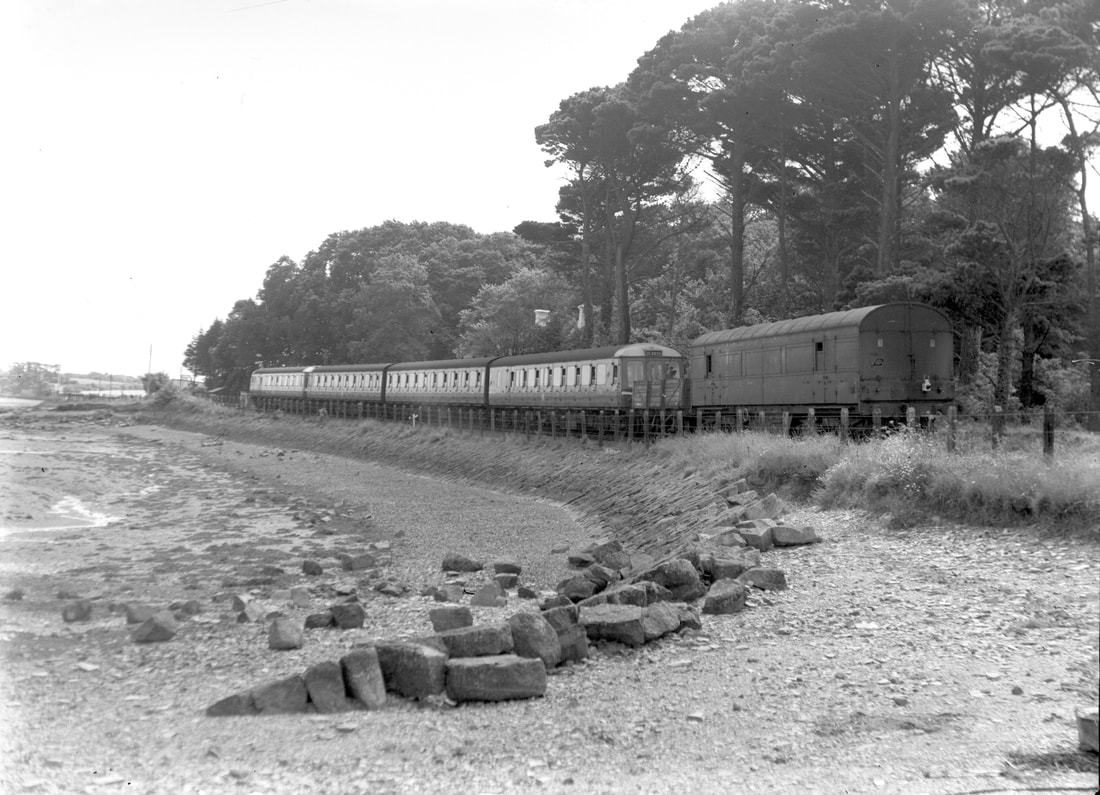
Paul Barlow
